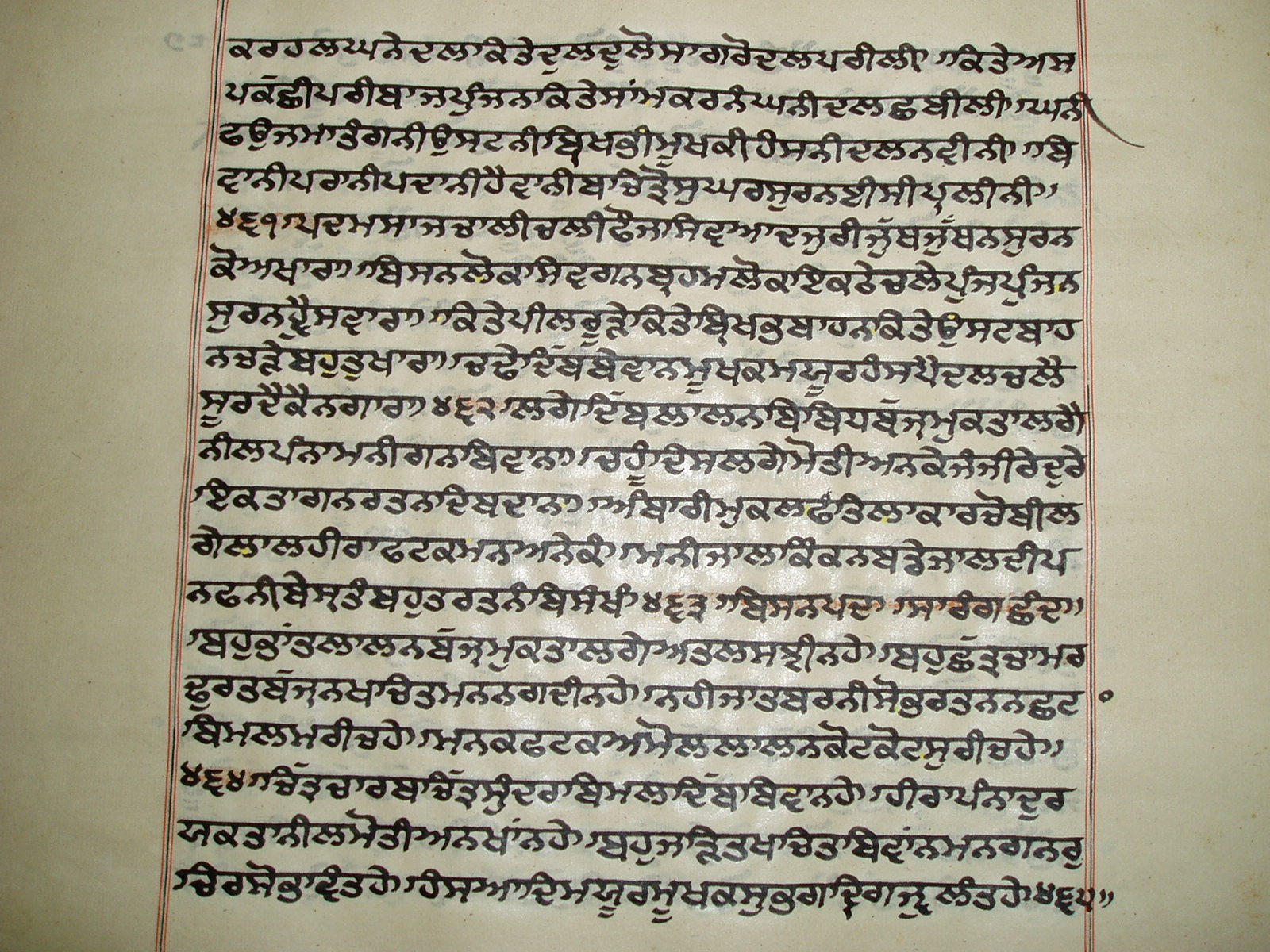Sarbloh Granth
The Sarbloh Granth (Punjabi: ਸਰਬਲੋਹ ਗਰੰਥ, sarabalŝha grantha) is a poem that recites the story of gods and demons, and is said to be the work of Guru Gobind Singh.
However, many scholars and researchers question the authenticity of the Granth and its credibility remains in doubt.
There is much scholarly work going into the authentication of the Sarbloh granth, one recalls passage written in manuscripts kept by
damdami taksal recording Banda Singh Bahadur having done seva of writing Sarbloh Granth handwritten birs (this point is from a very biased
and untrusted source someone should look into its authenticity).
The Baba Budha Dal of nihnags believe in the Sarbloh Granth in equal respect to Guru Granth Sahib and Dasam gratnh, When they do akhand paths they would do a combination of 4 birs, japji sahib, guru granth sahib, dasam granth and sarbloh granth.
There are many rumours about how the sarbloh granth came about it had not been present for many years till lately where some say
udhasis had it and gave it to the Baba Budha Dal, or some say it was found in a hole, where it had been burried for safe keeping.
Some say the work of the Sarbloh Granth, in recording to the dasam Granth where Guru Gobind Singh in his previous avtar of
Dushtdaman came and wrote this manuscript, which Guru Gobind Singh came to hemkunt to reclaim.
Much of this information is very vary and only the Baba Budha Dal know much about this granth. The publication of the Granth is also held in rights by Baba Budha Dal, so permission has to be seeked from them to start an electronic version such maybe to in comparison of Guru Granth Sahib and Dasam Granth like;
Dasam Granth Sahib online
Guru Granth Sahib online
To obtain a copy one must contact Baba Budha Dal press for, a manuscript, they are the only printers and key keepers of it.
__________________________________________________________________________________________________________________________________
In modern times the head of the ancient order Shromani Panth Akali Budha Dal Panjvah Takht 96 krori Nihang Singh Chalda Vaheer, Singh Sahib 96 Krori Jathedar Baba Santa Singh Jee Akali has done a great service to the Sikh tradition by bringing this Granth out into the public and returning it to it's rightfull place, prakash alongside Adi Sri Guru Granth Saheeb Jee and Dasm Guru Granth Sahib Jee. Baba Santa Singh has been successful in printing this granth in two volumes and also printing a small Sampuraan Granth for the purpose of parkaash.
In 2003, 96Krori Baba Santa Singh Jee conducted a Sarbloh Santia Smaagam where he personally over saw the santia of 18 individual Nihang Singhs. This smaagam has not been publicized, Baba Jee had the dream of conducting a Sampuraan Akhand Paath Saheeb of this Granth before he departed this Earth. His dream became true at Takht Sri Hazoor Saheeb Jee in 2003, the first recorded(In post colonial era) Sri Sarbloh Granth Akhand Paath took place at this blessed location.
The self proclaimed leader of the Budha Dal in U.K, the non bana wearing Needar Singh has done parchaar for several years claiming that this granth was to be treated as a Bir Rass Granth, thus the tradition of Jhatka(killing in one blow) was associated with it. Needar Singh's lack of scriptual education was exposed by the fact that the Sri Akhand Paath Saheeb of Sri Sarbloh Darbar was conducted in a completely Vaishnuu(vegetarian) manner.
The famouse Khalsa Mehma "Khalsa Mera Roop Hai Khaas - Khalse Mai Hou Karo Nivaas - Khalsa Mera Satgur Puraa - Khalsa Mera Sjn Suraa" are contained with Sri Sarbloh Granth. Also mentioned within one of it's Dhiyais (chapters) is the writing "Satguru Nanak Aap Parmeswar - Avtaar Lie Shubh Bans Pardhana".
In all Nihang Singh Dals, Sri Sarbloh granth is kept parkaash, it is venerated by Singhs in both the Buddha Dal and Tarna Dal.
An Ang (Page of a puratan bir of Sri Sarbloh Granth 18th Century)

![]() This article is a stub. You can help SikhiWiki by expanding it.
This article is a stub. You can help SikhiWiki by expanding it.
